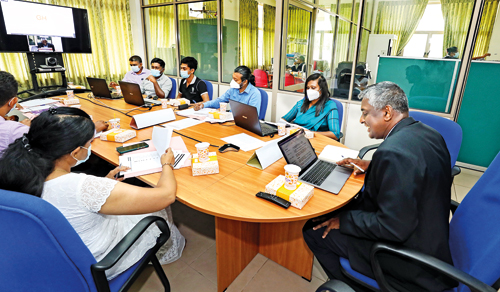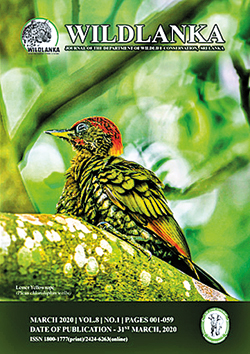News
Jaw-bomb success story shines as Wild Lanka treasures

WildLanka symposium in session
For three months, a young elephant that had its mouth blown apart with a cruel hakkapatas (explosive bait) was fed buckets of fresh juice and crushed grass through a tube inserted through a slit in its neck until its mouth healed.
The animal’s life hung by a thread.
Eventually, success followed the work of the veterinary surgeons and support staff at the wildlife department’s Elephant Transit Home (ETH) in Udawalawe, and the wounded elephant recovered and was released back into the wild.
It was among three of 13 elephants maimed with hakkapatas that have recovered after treatment at the transit home.
Scores of elephants, most of them young animals under the age of 10, are killed with these explosive devices disguised in fruit when they inquisitively nose them out among the litter on the jungle floor. The “jaw-bombs” have killed at least 425 elephants between 2010-18.
The veterinary procedures taken to save the tragically few elephants that survive have been recorded in a scientific paper presented by Dr. Vijitha Perera and his team of wildlife officials at the recent WildLanka symposium.
Scientists applauded the fact that symposium provided the opportunity for such valuable information to be shared and used elsewhere in the world instead of the vets’ heroic efforts being confined to the log books of the wildlife department and forgotten.

Success stories in print
WildLanka is the annual symposium of the Department of Wildlife Conservation (DWC), bringing together the country’s wildlife researchers and administrators. Its most recent session, on April 6-7, was held as an online forum.
A total of 62 research papers were presented, with four keynote speeches delivered by veterans of the subjects. The symposium is the crown jewel of the department’s scientific journal, WildLanka, launched in 2005.
“People just see the DWC as an agency whose job is just chasing elephants and doing trouble shooting managing wildlife human conflicts, but there are more technical things that we do behind the scenes in achieving conservation goals.
“Knowledge of these efforts were not being shared with the public and other experts, so we started the WildLanka journal to fill this gap,” the department’s Director of Operations, Ranjan Marasinghe, said.
“When the journal started in 2005, WildLanka was a biannual publication that received 50 papers, mainly from the scholars of universities that research wildlife. Now we are getting more papers, so we publish four issues annually,” Mr. Marasinghe said.
“In 2014, we started WildLanka Symposium to provide a platform for DWC officers and researchers to interact with experienced experts in wildlife locally and internationally.
WildLanka is a peer-reviewed journal with both Sri Lankan and international experts scrutinising the research papers submitted, chief editor Nilanthi Rajapakse said.
“It has been challenging to put on such symposiums during COVID-19 but the pandemic also had its silver lining. For example, we used to get down foreign experts, spending a lot of money for air tickets and accommodation, but COVID forced us to go online and we can now get more experts involved in the symposium, which provides us with more opportunities,” Ms. Rajapakse said.
Professor Devaka Weerakoon of the Department of Zoology of the University of Colombo said the journal and symposium provided a means to illuminate the significant high-level scientific knowledge possessed by wildlife staff.
She said it was especially beneficial to the field when papers saw collaboration between department experts and researchers at universities. Papers presented at the WildLanka symposium last month covered subjects ranging from a project on individual identification of the leopards of Yala, mangrove diversity at the Vankalei sanctuary, the population decline of sawfish, freshwater fish diversity in some parks, the grading system of bungalows in wildlife parks and many aspects of human-elephant conflict.
For more success stories of the Department of Wildlife Conservation go to http://journals.dwc.gov.lk/ to browse past issues of WildLanka online. Printed issues are available at the department for anyone to purchase.


